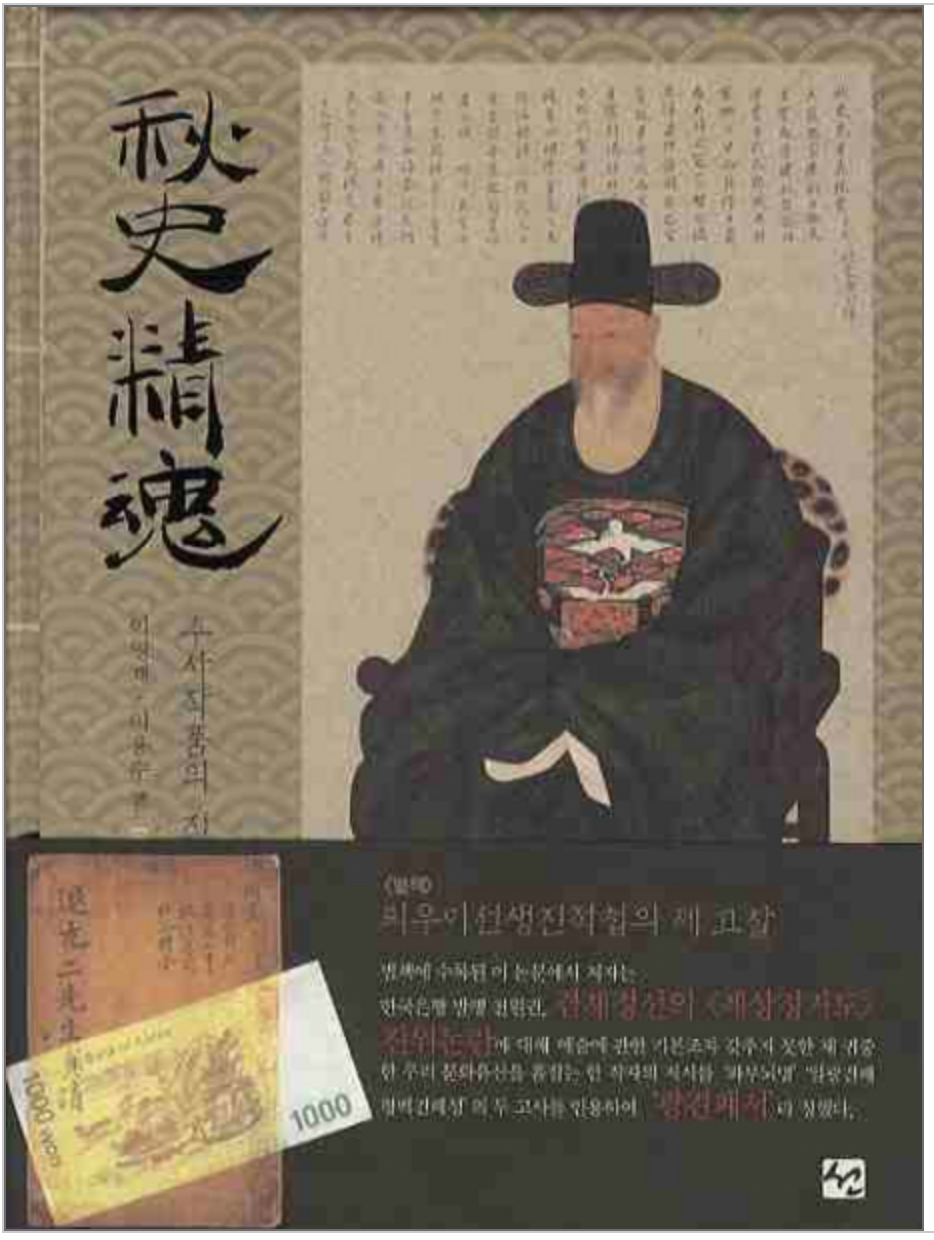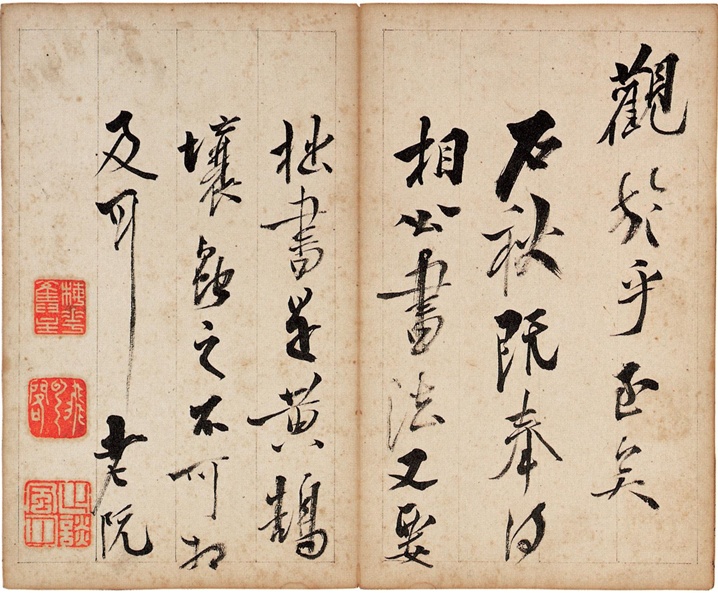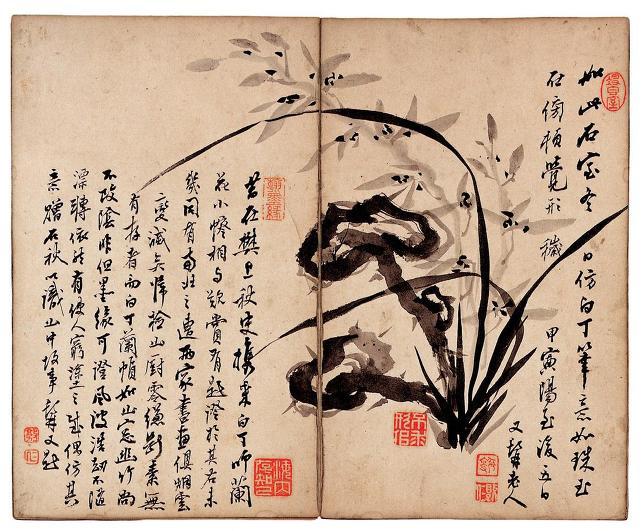
표제: 흰눈집주인 이 영 재(1930~)
Major Fallacies in the study of Jeong-Hee Kim (Chu-Sa 秋史, 1786-1856)
混沌 (CHAOS)とand 選択(CHOICES)
“今われわれが目で見ている物は絶対的な真実だと言えるか?”だったら、他の動物に見えた世界はどうか?たしかに、人間とは異なると思われます。また、われわれの前で起こっているが、見えない現状などはどう説明できますか?その上、さまざまな錯視現状などまでを考えると、われわれは、幻影(Illusion)と混沌 (Chaos)の中で住んでいると言えます。
Can you say that what we're seeing is absolutely truthful?" Then, other creatures such as dogs, cats, any kind of insects, and so forth, what about the world other living things in nature see through their eyes? The world they see might be very different from the world we see now. Also, how can you explain what is going on in front of us, but not in sight, etc.? In addition, considering the various illusionary situations of the world, we could say that we might live in Illusions and Chaos.
実はこの世界には絶対的に明確なのは存在できないし、また、存在しないと思います。各個人はこの混沌のなかですべての状況を客観的に調べ(中庸の道、中庸の美)、毎瞬間最善の選択しに努力しているだけだと思います。それから、われわれの人生は毎瞬間このような選択をするべきの‘選択の連続性’の上に置いてあると言えます。また、このような選択はわれわれに向かう視線だちでも起こる‘相互的な選択の連続’と言えるし、このような選択は芸術世界で作家と観客の中でも同じだと思います。
- 李 庸 銖
Do you think absolutely obvious and clear things in the world could and would exist? I think, in fact, the absolutely obvious and clear things of the world can not and will not exist. I could say that each person just objectively examines all the situations in this chaotic environment (the middle course, the beauty of the middle course), and only strives for the best choices in every moment. And then we can say that our lives lie on the continuity of choices that we should make in every moment. This kind of choices could arise from the opposite direction(s) as well. The choices in both ways can also be called a series of 'mutual choices'. And I think this kind of choices occur among artists and audiences of the art world.
- Yong-Su Lee


Yong-Su Lee
The Moam Collection
The achievements of Jeong-Hee Kim, a well-known scholar based artist, have been recognized by many Koreans and Kim still has strong influence on people in Korea and Korean art society. Resulting from this, Jeong-Hee Kim has become one of the most popular and favorite artists in Korea. On the contrary to this, however, considerable drawbacks lie in the study of Jeong-Hee Kim.
Up until now, a variety of exhibitions of Jeong-Hee Kim's collection have been organized by various institutions, such as a series of exhibitions with several publications including Chu-sa Jib (Hyunamsa, 2014), “Ink Rubbings of Chu-Sa (Chu-Sa Tak Bon Jeon)”, “Wan-dang and his wind” in company with the publication “Biography of Wan-Dang (Wan-dang Pyoung Jeon, Hakgojae, 2002)”, and so forth. As a result of these exhibitions with publications, many Koreans have become keenly interested in Jeong-Hee Kim’s works.
Although large numbers of shortcomings were in the publications above, interestingly enough, Wan-dang Pyoung Jeon has received much interest. " Wan-dang Pyoung Jeon and Chusajib" are significant as the first in-depth and overall research about Jeong-Hee Kim and his works. Those books present Chu-sa's personal life and the whole range of his works by period and works of art. These books are regarded as required texts for studying Chu-sa and his works by scholars and students.
However, in spite of two Korean scholars' significant contributions, numerous misrepresentations exist in their books and in the exhibitions mentioned above. Even though I do understand we need a very careful and deliberate approaches, treatments and I totally recognize it might be an inappropriate approach to study art history at some points, I would like to point out that a major problem is many inauthentic works are (still) in those books as well as in the exhibitions. Besides, those authors misunderstood the works of Jeong-Hee Kim’s students, such as Don-In Kweon, Hwi-Yong Cho, Jeong-Hyun Yun, and Ha-Ung Lee, for the works of Jeong-Hee Kim. In addition, some misunderstandings and fallacies in translation and anecdotes of Jeong-Hee Kim have frequently appeared in other primary book resources. In my point of view, this is problematic now that it could make people all around the world including Korea confused. And scholars, students, and general public might regard the inauthentic works as the genuine ones, and they might study Jeong-Hee Kim and his works based on these incorrect materials and resources.
In this section of my thesis or dissertation(publication) I would like to focus much more on the source of confusion between Jeong-Hee Kim’s works and that of his students’, especially Don-In Kweon. For this I will demonstrate that the pen names, “Yeum(髥), Yeum-Na(髥那), Na-Ga(那伽), Na-Ga-San-in(那伽山人), Guo-Sa(居士), Byung-Guo-Sa(病居士)” formerly accepted to be that of Jeong-Hee Kim are in fact not the case. Rather these pen names are Don-In Kweon’s by the study of Wan-Yeum-Hap-Byuk(阮髥合璧) which is the album made mostly by Jeong-Hee Kim and Don-In Kweon. To do this I will select Jeong-Hee Kim’s works from “Wan-dang Pyoung Jeon & Chusajib” and explain why these works are not Chu-Sa’s.
ⓒ 모암문고 茅岩文庫 The Moam Collection www.moamcollection.org
무단전재 및 도용 재배포금지 | 저작권문의